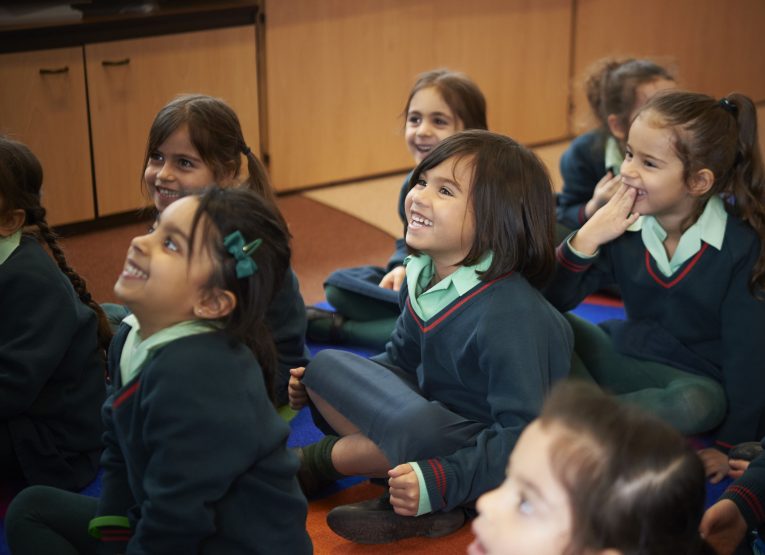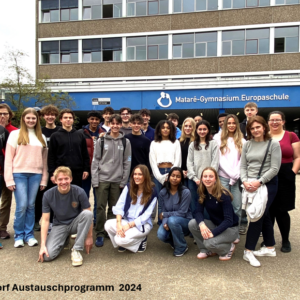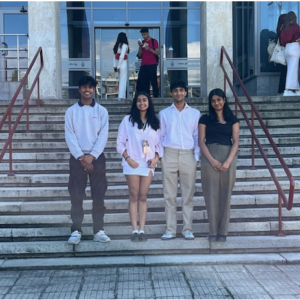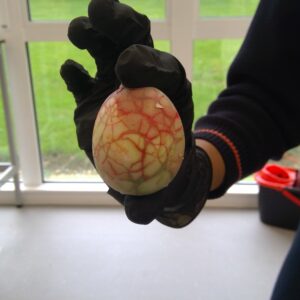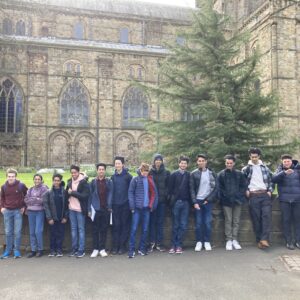Kiana in Upper 6 recently presented a moving and enlightening assembly on her own ‘Grand Tour’ of Iran. You can read the full text here.
As I was deliberating on what I wished to present as my last solo Humanist assembly, the options seemed vast. If there ever was a caveat in liking too many things at once it would be this, having far too many ideas to condense into a fifteen-minute talk. But it seemed that the internet panic following Soleimani and the copy of Herodotus I was reading at the time made my decision for me. I thought back to a personal and physical journey I had taken through Iran not so long ago, prior to which I had found it difficult to imagine Iran as a country with 24 UNESCO world heritage sites, testament to a long and important history. I began to think on the journeys we take through other cultures and countries, on which cultures we tie together more closely, which we pose as complete opposites, and how I could frame Iranian culture in a way that strikes us as familiar and also creates a distance, as is the state of travellers when they make their journeys through seemingly foreign lands.
Travel as an educational custom is nothing new, and from the sixteenth to the eighteenth century, the epitome of cultural experience was found in the European Grand Tour. To set the scene, you’re a young, classically-educated graduate in search of art, architecture and antiquity which has lain the foundations of your upbringing. You travel across Europe accompanied by a Cicerone, a learned guide, whose name is very possibly taken from the great orator Cicero, where compulsory stops include Paris, Rome and Venice. If there was ever any experience to embody cultural capital, this would be it. Much like how literary and intellectual figures such as Goethe and Bryon went on the famed Grand tour of Europe in their mid-twenties for cultural inspiration and the chance to walk in the footsteps of the Classical Greats, Ovid, Virgil, Horace, to name but a few, I went on a tour of my own, a tour of Iran, to visit the sites and places which echoed with the life and richness of the poetry of Hafez and Ferdowsi, the still spirituality of Persian gardens, and the imperial aura of its dynasties. Albeit that I was significantly younger, not male nor aristocratic, and though I did not possess the prowess such that I could thereafter produce poetry on par with die Römische Elegien, I was just as awed. There’s never been a Grand Tour of Iran, but I felt as if I had been on one. Iran is a beautiful country, possessing a relatively unnoticed landscape and heritage it seems, in comparison to others, which I would like to share with you today, in the similar way I was able to discover it six years ago, as a kind of tour, though I cannot attest to being any kind of Cicerone.
It seems fitting to start with the most distant aspect of all, in terms of time, and even to most Iranians today: the ancient remnants of the practice of Zoroastrianism, one of the world’s oldest continuously practising monotheistic religions. The decline of Zoroastrianism began with the entry of Islam, following the Muslim conquest of Persia in the 7th century, but that doesn’t mean that Zoroastrian heritage is wholly removed from the Iranian psyche, and it is in Yazd where the greatest presence of the religion is felt. The Zoroastrian ancient burial sites in Yazd, for example, shed a fascinating light on attitudes towards death and life. They are known as the dakhma, the towers of silence, where bodies were placed for sky burial. Aside from more practical reasons, the rationale behind such a technique is this: the dead body is considered Nasu (unclean, more specifically the female name for demon in Avesta, the old Persian language) and should contaminate neither Earth nor Fire, two sacred elements in the religion. Fire is an essential part to Zoroastrianism, easy to recognise once one descends down from the burial sites to enter the Temple of Fire, in which an eternal flame is supposedly kept, and the value and recognition of its importance continues today in Iran in the celebration of Norooz, the New Year, when everybody jumps over a fire of sorts and uses it as a cleaning power to purify the soul before progressing into the year to come. Even the legendary King and Fighter Seyavash from the Iranian Epic poem, the Shahnameh (Book of Kings), has to jump through un-burning fire to prove his innocence, and on the two sides here, you will see some manuscript depictions of him doing so.
On the subject of poetry, though it is not a physical cultural site, I think the Iranian people’s relationship with their literary heritage is one to be admired. Even outside cultured circles of bourgeoise Tehran, there is such great pride amongst Iranians of all walks of life towards the poetry that their ancestors have produced. When Iranians wish to back their nationalism with finer words, whether they can read or not, they may recall some couplet of the tenth-century Ferdowsi, whose work traces Iranian history from the beginning of Time to the Arab conquest in three sections: mythical, heroic and historicising, to show Iran’s Glory Days as he saw it. In the Shahnameh we find fabulist tales of love and war, fathers and sons, brothers pitted against each other, kings, at once noble and petty, and a dose of magical monsters and demons for good measure. There is seamless progression between the reigns of some fifty Kings, and yet the reminder of Life and Death in the Epic comes from the ever-looming Father Time. The mausoleums of the poets, open from eight in the morning to eleven in the evening, are full of Iranians who come from all parts of the country who go there to recite the verses of the poets, to remember them with music, and to sing their poems together as a family. I’ve always been astounded by the speed at which one family member can produce half a line, to have another instantaneously fill it in, to fit the meter, when I still sometimes struggle with scanning to lines of Ovidian dactylic hexameter. A few years ago, I delivered a school assembly on Oral Traditions, starting with Homer and examining the idea of oral-formulaic theory. To figure out how bards could have possibly passed down the epics of the Iliad and Odyssey, two scholars, Milman Parry and Alfred Lord, conducted extensive research on Serbian oral epic poetry in a bid to truly understand how these illiterate individuals could recall thousands of lines. It dawned on me that I can make connects here on two counts. It is not dramatic to say that poetry is life to Iranians, that there is not one moment in the day for which a line of the Shahnameh, fifty thousand couplets in all, is not appropriate, in a similar way in which the Homeric epics provided a common set of values, a set way of examining life, heroism and being human. I think, had Parry and Lord, conducted their work amongst Iranians, they would have failed to gain a sound basis for oral traditions, but they would had a deep insight into how shared history and experience manifested through poetry can form the heartbeat of an entire nation.
To view the greatest material culture which Iran has to boast, one would need look no further than what lies some two hours outside the city Shiraz, the extensive ruins of the ceremonial seat of the Achaemenid empire. The monumental stone plinth surmounted by pillars and the winged griffins guarding the ‘gateway of nations’ have been frequented by curious visitors for centuries, most of whom gazed in wonder at the legacy of majesty and decay. The Greeks called this city Persepolis, city of the Persians, but the Iranians learnt to know the city by the name Takhte Jamshid, the Throne of Jamshid, one of the great Kings of Iranian mythology. That this capital has two names, and the Iranians have no desire to replace one with the other is telling of a dual ended inheritance in the Iranian psyche: both historical and mythological. In about 518 BCE, Darius the Great ordered the construction of a palace complex on a platform at the foot of a mountain called Mehr; subsequently, the structures were extended by his successors, Xerxes and Artaxerxes I. The whole platform covered an area of about 125,000 square metres. Renowned as the gem of Achaemenid ensembles in the fields of architecture, urban planning, construction technology, and art, the royal city of Persepolis ranks among the archaeological sites which have no equivalent and which bear unique witness to a most ancient civilisation, designed primarily to be a showplace and spectacular centre for the receptions and festivals of the kings and their empire; Darius asserted that “Ahuramazda (the highest spirit in Zoroastrianism) was of such a mind, that this fortress be built. And so I built it. And I built it securely and beautifully and adequately, just as I was intending to”. To look at just a few examples of what remains, we have the Apadana, used for the reception of Kings, whose thirteen remaining columns (out of seventy two which existed) are adorned with rows of beautifully executed reliefs showing scenes from the New Year’s festival and processions of representatives of the twenty-three subject nations of the Achaemenid Empire; here is the Hundred Column hall, as imposing as the name suggests with its eight stone doorways, which displayed tribute and plunder from the Royal treasury, and, the Palaces of Xerxes and Darius, their reliefs depicting the battles of Kings with monsters, the former inevitably coming out on top. It seems fairly obvious to me, at least, in light of all this glory, why Iran’s last King, Reza Shah, with a tendency for decadence, held a great ceremony and parade in the shadow of Persepolis in 1971 to commemorate 2500 years of Iranian monarchy (though I won’t comment on that outcome!).
And now, onto every philologist’s dream site, and, in my view the pièce de resistance of my tour: the Behistun inscription. Located in the Kermanshah province of Iran, it is an inscription written in a writing system known as cuneiform script, once thought to be undecipherable and impenetrable, and is no longer such, thanks to this wonderful juxtaposition of three different languages written in cuneiform that we find here at Behistun. It is a thing of beauty, and of great value. We could call it the Iranian Rossetta stone, or equate it to Myceanean Linear B, astounding as those were, but the intricacies of this decipherment go even beyond.
The text of the inscription is a statement by Darius, written three times, in two languages side by side, Old Persian and Elamite, and in Akkadian above them. Darius arranged, some time around 515 BC, for the inscription of a long tale of his accession, including his authority to rule by divine grace, and his subsequent successful wars and suppressions of rebellion, to be inscribed into a cliff in the foothills of the Zagos mountains. The text is written in columns above a scene in which Darius, followed by two escorts, tramples on the body of the king he has overthrown and faces a line of nine imprisoned rebels bound and led by a rope. He appears to be looking upward at the image of the Persian symbol of divinity, representing the supreme god Ahura Mazda. Though all three language passage were physically beyond easy reach, the first to be approached was the Old Persian; using the German scholar Georg Friedrich Gotefend’s elementary lexicon of the language, and Modern Persian, Sir Henry Rawlinson, a British officer training the army of the Shah of Iran, managed to decipher the text, being especially lucky since its first section corresponded to the Persian Kings found in Herodotus. Old Persian became the ‘crib’ against which the other two could be compared. The name of Darius (pronounced Dariawush) and the repeated phrases of ‘King of Kings’ and ‘Great King’ (because no regal inscription is complete without emphatic self aggrandization!) could now be located within the Akkadian cuneiform. Though this did not spell the end to the obstacles in the way leading to the recognition and decipherment of all cuneiform scripts, the inscription was a great propellor towards genuine progress. It never fails to amaze me that we are able to look upon an inscription of such scholarly merit. Out of the entire corpus of Achaemenid inscriptions, it is the Behistun most of all that allowed modern scholars to decipher the scripts; a decipherment which opened up a whole new world to historians of antiquity. The inscription also raises the question of multilingualism in ancient societies, and the mental processes behind adapting writing scripts to fit a multilingual purpose.
To me, it is the jewel in the crown of Iranian heritage, and makes me proud to be from a country which contains it within its borders. It represents what I feel has been my message today. Just because I have reimagined the Grand Tour does not mean that I would not have loved to go on the original one – if anything, it seems right up my street – but perhaps, it is just as worthwhile to journey off the beaten track, to use a culture familiar to you as a kind of crib by which you can come to appreciate adjacent or opposing ones more, but ultimately on their own terms. Think of it as deciphering a small section of cuneiform; what is once alien to you need not remain that way forever. You may remember Goethe from earlier on in this assembly; he wrote poems based on his classical adventures on the Grand Tour, but was also heavily inspired by the fourteenth century poet Persian Hafez, and wrote a collection of poems called the West Östlicher Divan in which he calls Hafez his twin brother in art and mindset, despite the three centuries separating them and their difference in religion and place of origin. This unexpected but no less worthy poetic relationship is commemorated in Weimar in Germany with a memorial of two chairs facing each other, engaging in cross cultural dialogue. There is a line from the Diwan engraved at the foot of the chairs, it reads, to put it into English: “He who knows himself and others, will also recognise here, that the Orient and the Occident are no longer to be separated”.
It is a profoundly moving statement in my eyes, and hopefully from my assembly, you may begin to be able to see why. Thank you


